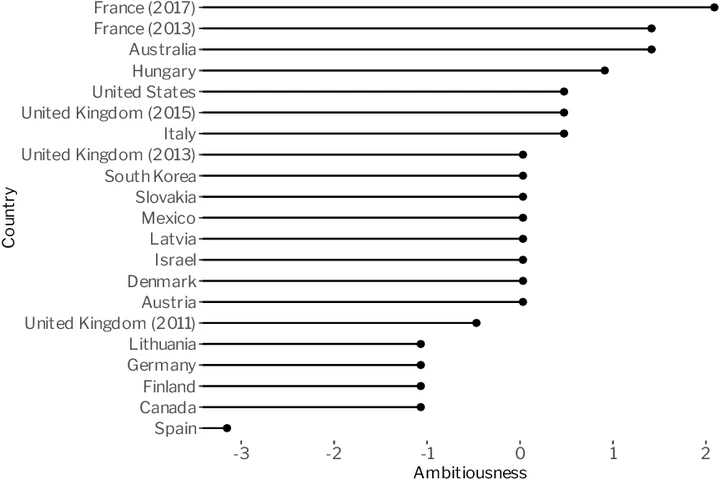Regulatory offsetting in advanced democracies
 Severity of regulatory offsetting policies.
Severity of regulatory offsetting policies.
Abstract
The growth of rules in modern democracies burdens citizens, businesses, and administrative bodies. To address this, many governments have implemented so-called “regulatory offsetting schemes,” requiring the removal of existing rules and regulations for each new one introduced. However, systematic knowledge on which countries have adopted these schemes and their specific designs remains lacking. Our study maps regulatory offsetting initiatives across OECD states and offers a first theoretical framework for understanding government adoption. While political and ideational factors influence the adoption of offsetting schemes, they do not explain their specific design. Offsetting schemes thus reflect the political tensions between advocates for an activist state and supporters of a more restrained government, with design being of secondary importance. These findings enhance our understanding of how governments and public administrations manage rule growth.
Evidence for practice
- It is crucial for the public administration community to familiarize itself with regulatory offsetting schemes as a tool for managing rule growth. This includes understanding the concept of regulatory offsetting schemes, its objectives, and its various design aspects such as the type of burden to be offset and the scope of application.
- The great variation in regulatory offsetting schemes around the globe and the analyses presented in this article suggest that offsetting schemes are political tools situated at the cleavage between those advocating for a more activist state and those aspiring for a more restrained government, hence affecting the workings of the public administration in potentially diverse ways.
- Administrators should thus remain flexible and adaptive in their approaches to regulatory offsetting schemes, considering the political context in which they have been adopted and engaging in rigorous evaluation of their effectiveness in achieving their intended goals.